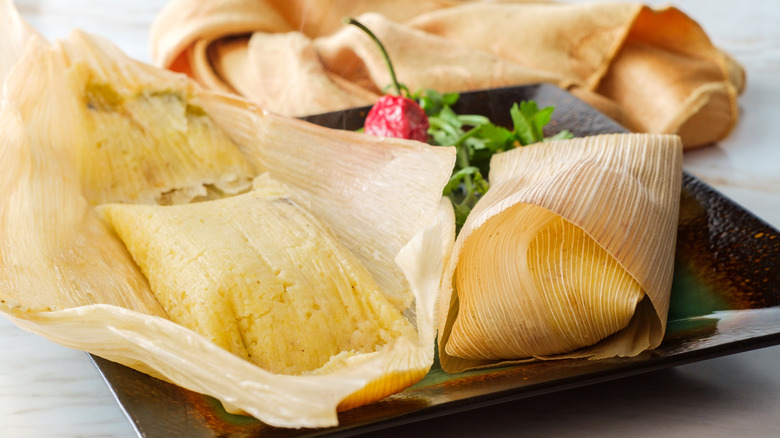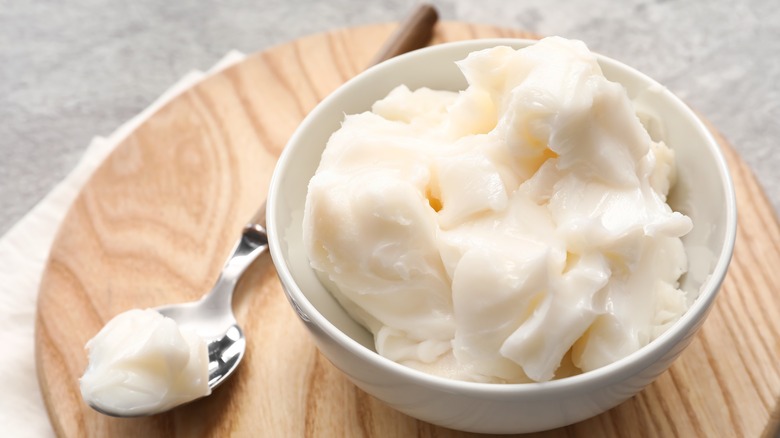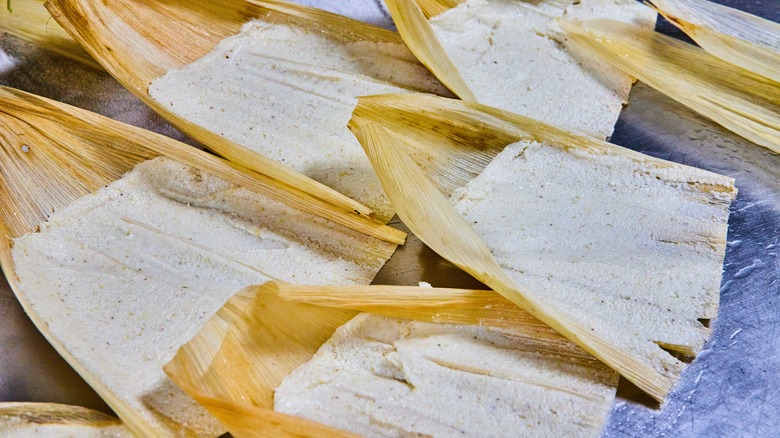For The Absolute Best Homemade Masa, You Need Lard
Tamales take a long time to make. They're a labor of love. If they come out right, they're little packets of delicious comfort food: Small bundles of joy delivered in corn husks. But if they don't come out right, they're crumbly bricks of disappointment that suck the moisture out of your mouth and the happiness from your heart. Perhaps the most crucial ingredient to a light, fluffy, moist masa is one you're not used to cooking with, and that's lard.
If you're not from a culture that regularly uses lard in recipes, it can be the cause for some pause. If you cook or bake with oil, butter, or shortening; if you've ever had duck fat fries or "confit" anything; or if you've ever eaten a really good tamal, don't be afraid. Lard is simply another cooking fat. And it's the open secret to good tamales. Lard does in masa what creamed butter does in cakes: It makes an emulsified batter that holds aeration in the face of added liquid. In simple terms, it makes your masa tender, moist, and fluffy.
Whether you're making masa dough from dried masa harina or fresh masa, it should start with beating lard until it's fluffy. This is the base for good tamales; under-prepping the lard can result in dense tamales.
What is lard?
So, what exactly is lard? Lard is rendered pork fat. If you've ever cooked with leftover bacon grease, you've kind of cooked with lard! It's used for its stability, high melting temperature, high smoke point, and good plasticity (the temperature range within which fat can be spread and hold shape).
Depending on where in the body the fat came from — abdominal cavity fat surrounding the kidney, subcutaneous fat like pork belly, or intramuscular tissue fat — it could have different melting points. The overall range of lard, though, is 86 degrees to 113 degrees Fahrenheit. Its plastic range is wide, remaining workable until frozen. Butter — to reference a fat that is solid at room temperature – melts between 90 to 95 degrees Fahrenheit and loses plasticity under 50 degrees Fahrenheit. Lard works within a wider range of temperatures, which is good news for a long project like making tamales.
If you're looking for lard, you can probably find it at your local grocery store: Either near the meat section, butter, cooking oils, or in an international aisle near the Hispanic foods. If you can't find it there but you have a Mexican market nearby, you'll find it there. Look for a package of something called "manteca." If you have a good butcher, they might sell lard.
Substitutions for lard in masa
When making masa the traditional way, lard is the best option. But if you can't, won't, or don't eat pork products, you can substitute with another ingredient for a good enough tamal. If you eat animal products, beef tallow (preferred) or chicken schmaltz can be subbed in for lard. One cook on Reddit made a test batch of lard and schmaltz masa tamales and reported that both were good, but said the schmaltz tamales were "slightly drier and crumblier." Schmaltz melts at a slightly lower temperature than high-quality lard — 95 degrees Fahrenheit — so the schmaltz may have melted out of the tamales early.
If you don't eat animal products, skip the coconut oil. It has a melting point even lower (78 degrees Fahrenheit). Avoid using vegetable oil in your masa because it will make the tamales greasy. Opt, instead, for vegetable shortening, known most commonly by the brand name Crisco. But, whatever you do, don't skip the fat altogether. It's crucial for both flavor and texture in your masa. Without it, your masa will basically be corn tortilla dough: Good for thin tortillas but will make for dry, crumbly, dense tamales.


